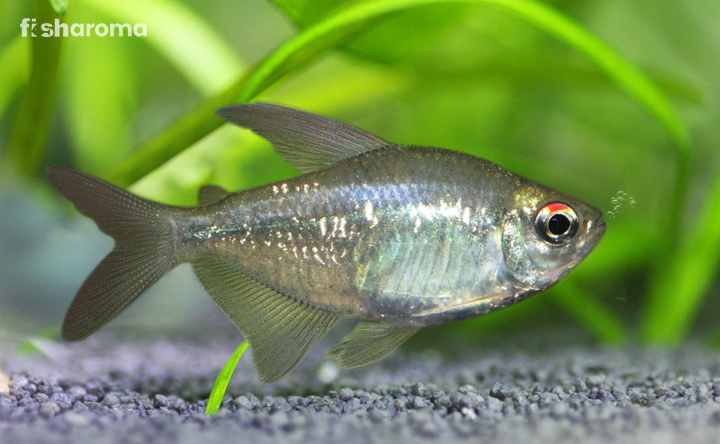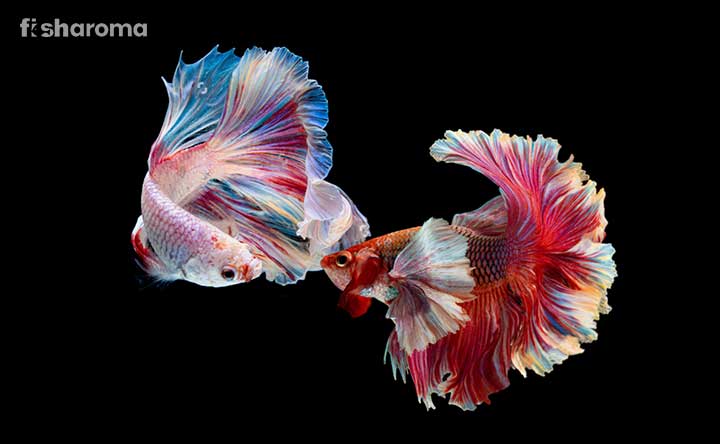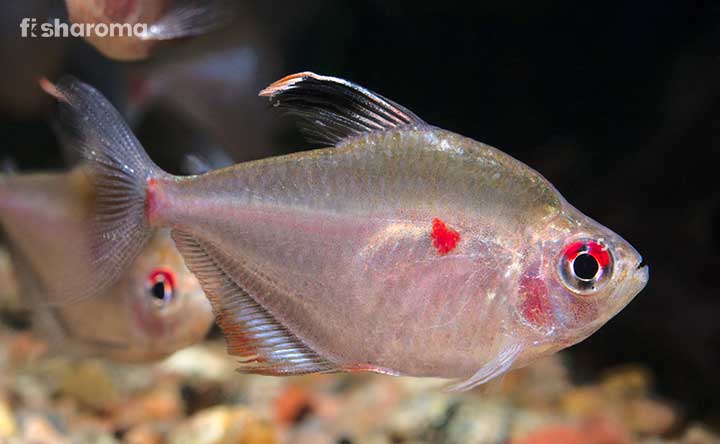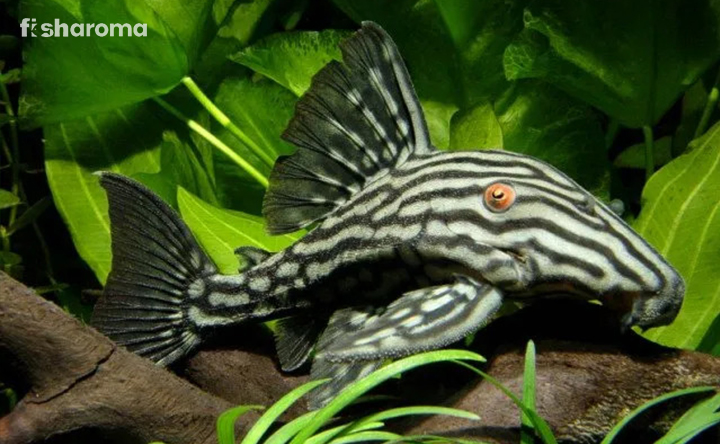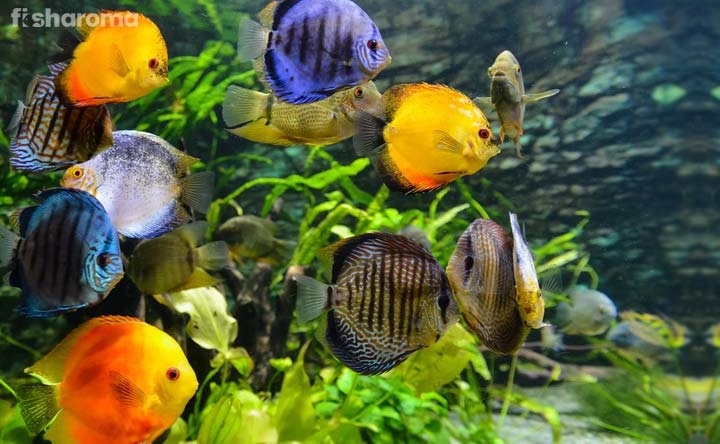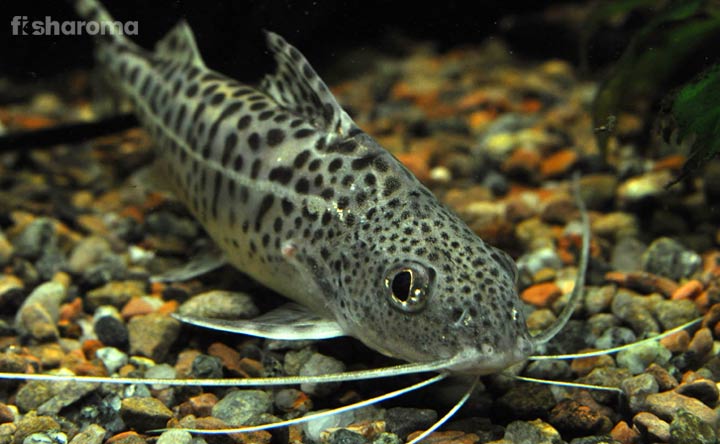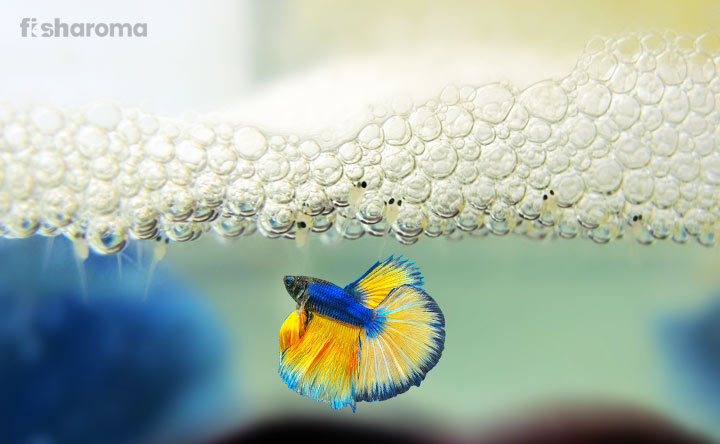Pearl Gourami: Care and Breeding Guidelines For The Spotted Beauty
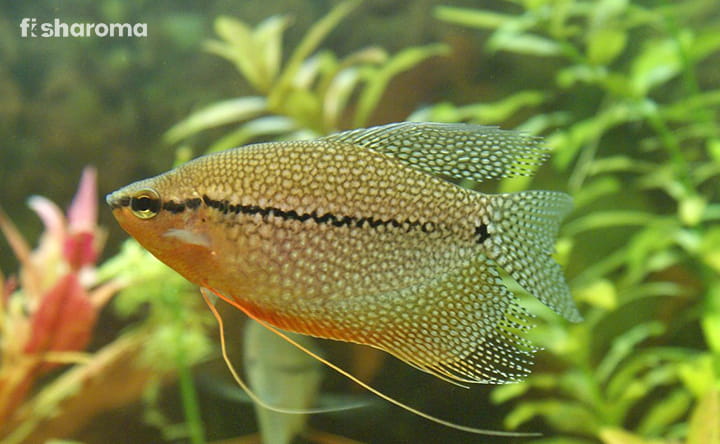
Pearl Gourami comes along with a power-packed combination of a stunning appearance and gentle behaviour. They are mostly content with themselves and demand nothing more than basic maintenance. In regards to that, remember that it is a freshwater species and needs pretty much everything that any other gouramis will require for thriving in a homely aquarium setup.
We have categorically placed all that you may want to know prior to petting one Pearl Gourami. The following table is the beginning of the comprehensive study. So, what are you waiting for? Dig in!
Key Specifications of Pearl Gourami
| Other Names | Lace Gourami, Leeri Gourami, Diamond Gourami, and Mosaic Gourami |
| Origin | Indonesia, Malaysia, and Thailand |
| Lifespan | Around 5 years |
| Colours | Brownish or reddish body with white spots |
| Temperament | Gentle |
| Size | 4-5 inches |
| Diet | Omnivorous |
| Reproduction | Egg-laying inside bubble nest |
| Maintenance Requirements | Medium |
| Tank Size | Around 30 gallons |
Overview
Pearl Gouramis, scientifically known as Trichopodus leerii, are a Southeast Asian species, profusely occurring in the wild. It is due to their colouration, they have been introduced to the captive breeding and pet trade. As expected, their popularity knows no bounds. Belonging to the Osphronemidae family, this fish is vocally blessed and often the sound comes across as “talking”. The uniqueness doesn’t end here, read the entire article to know more about the amazing species.
Origin and Habitat of Pearl Gourami
Pearl Gourami is endemic to Asian countries like Malaysia, Thailand and the Indonesian Islands of Sumatra and Borneo. But, according to the course of the pet trade, they are now extensively bred in South America as well.
These fishes are naturally found in slow-moving lowland swamps, which are acidic. But over time, they have moved their ways to other water bodies which are stagnant or similarly slow-moving backwaters. Their natural habitat is usually surrounded by dense forest or vegetation. The water type is essentially shallow and the surface is muddy with lots of foliage on the surface level.
Appearance of Pearl Gourami
The exquisite fish has a thin body with an oval or elongated shape. The fins are characteristically prominent with the anal ones being large and the dorsal ones being comparatively shorter. The pelvic or ventral fins are thin and long, like a couple of strings hanging from their body. These are their iconic marks and these fins can surpass the length of the caudal fins.
Size
The average size of a Pearl Gourami is 4 to 5 inches, without considering their extra-long pelvic fins. Males are bigger and slimmer than female fishes.
Colour
The base colour of the body is either brown or has a reddish tint mixed to it. But the toppings are nice-looking white spots, running throughout the body. These white dots look like pearls on the tiny body and hence, justifying the name (i.e Pearl Gourami). There is a typical horizontal black line, starting from the mouth and continuing somewhat till the tail. Amidst the white spots, light brown spots are also visible, but that follows no particular order.
Male Pearl Gouramis have red breasts that intensify with maturity and reach a crescendo during their mating time.
Behaviour of Pearl Gourami
This fish has a mild temperament throughout its life, leaving aside some exceptional phases like breeding. Like many species, their natural mating time is difficult as far as their mood is concerned. While males turn aggressive, females are moody and temperamental as well. They are not usually choosy or demanding about anything in particular, but can be sensitive to certain water parameters, during the breeding time. For that reason, their behaviour might seem changed and affected around the time.
These overall hardy fishes can stay with a wide range of pet fishes inside a tank due to their docile behaviour. We will talk about this in the compatibility section in detail. They are usually peace-loving and can’t usually go for a showdown with other fishes.
These fishes mostly swim through the middle and upper zone of the water because of their biological compulsion. Like their other Gourami cousins, these fishes require oxygen directly from the air and not from the water exclusively. They breathe through their labyrinth organ, but during their juvenile phase, they use their gills.
Lifespan of Pearl Gourami
The Pearl Gourami can live for 4 to 5 years in captivity. However, longevity can be exceptional for individual fishes.
Diet of Pearl Gourami
Pearl Gouramis love to consume anything and everything without any fuss, but proportionate amounts should be provided so that the fish doesn’t suffer from obesity or any other digestive issues. Twice or thrice feeding in a day is perfect for the fish. Don’t provide anything that can take more than two minutes for the fish to consume. As that will spoil the food and result in unnecessary food accumulation inside the tank.
While in the wild they are habituated to get zooplanktons, larvae, and algae and other insects, they can adapt to consuming pelleted and flake foods in captivity without the slightest problems.
Always remember that their easy adaptation should not make them idle, losing interest in catching live prey. So, balance it out between live and frozen items so that it can work for the meal it is getting.
Also, commercially available foods like flakes and pelleted ones are useful because they are easily digested without harming their systems. Good digestion means there will be a lot less bioload or waste, produced by the fish. This will help the water to stay clean as long as possible.
Keeping in mind all the above-mentioned foods, we have catered the following items that you may choose for your Pearl Gourami
- Brine Shrimp
- Mosquito Larvae
- Glass Worm
- Black Worm
- White Worm
- Tubifex
Tank Requirements of Pearl Gourami
In the wild, Pearl Gouramis are slow-swimmers and they prefer tranquil water. Obviously, in a pet tank, the same parameter needs to be maintained. Read on to know more about it in a detailed way.
Tank Size
These fishes require aquariums with around 30-gallons of water holding capacity.
Tank Lid
We have previously mentioned that these fishes have labyrinth organs, meaning they need to reach the surface of the water for oxygen supply directly from the air. So, the lid is important in this matter, and you have to make sure that the lid doesn’t obstruct the airways and suffocate the fish. It should significantly cover the tank, maintaining the humidity (apt for the fish) and the temperature.
The lid also protects the tank from any foreign objects or particles getting accumulated and disturbing the inner ecological balance or injuring the fish.
Substrate
These particular fishes don’t have any specific requirements regarding the surface. You can always place fine and super smooth gravel or sands at the bottom of the tank. These substrate options are always the best, as no injury can be caused by these particular surface types. You can place rocks along with the gravels, but none of them should be sharp.
Presence of Flora
In their natural domain, the fishes are common to come across a lot of plantations. So, deep-rooted plants should be placed inside the tank, so that the fish feels like home. Floating plants are also highly appreciated as they create illusions with the lights resulting in the ideal semi-dark environment. Below are the names of the plants that you need to provide.
The fishes don’t like to consume plants extensively, so you can keep these plants for good, in the tank. This vegetation makes the fish secure and they feel comfortable swimming around these plants.
Filter
A moderately suitable filter, like an Air Pump, will be good. Anything strong should be avoided because neither the fishes require a strong flow, (they swim in slow-flowing water), nor do they need oxygen from water ( because they breathe from the air).
Ornaments
For decorations, some driftwoods or cave-like structures are important. Keep some wooden stuff, so that they can produce algae after a certain time. The fishes will enjoy swimming near them and consuming algae whenever required.
Excessive ornamentation will reduce the swimming space, and the fish might be stressed because of this. So, don’t go overboard with this thing.
Lighting
Prepare aquarium lights with dim rays and a soothing tone. Moreover, the live plants always adjust the lights.
Cleaning Method
Maintaining the water quality needs cleaning of the tank ( both external and internal) with a damp or dry towel, whichever you feel is necessary. The ingredients that you put into, (if you place any artificial decor objects), can be cleaned by taking them out of the tank and washing them thoroughly. Excess algae should also be cleaned (if your tank is entirely vacant then scrub off the algae) so that they don’t create any problem for the health of the fish.
Water Type of Pearl Gourami
Here we are discussing parameters for an ideal Gourami tank. These fishes are a species of slow-moving water bodies which are acidic. In order to keep them content and healthy, you need to provide similar conditions for them. These fishes have a sensibility to the slightest changes in those parameters, for that, scrutiny well and monitor so that these conditions remain static and unchanged.
However, we are providing a range instead of a specific degree and unit, so that you have the liberty to monitor these parameters within the same recommended range.
Temperature
The thriving temperature range for Pearl Gourami is 23.3 – 27.7 Degrees Celsius.
pH Level
The water needs to be low in acidic content and its pH range is 5.5 – 8.
Hardness
The general hardness of the tank water should be 5 to 30 dGH, reflecting the more or less same water hardness that these fishes usually find themselves in their natural surroundings.
Replacement Procedure of Water
Changing the water holds significance because these fishes can fall sick if the water gets dirty and remain the same for a long time. The polluted water produces some toxins that directly affect the tissues of fishes.
You should change 25% of the tank water every week. If that is way too frequent for you, then do it after every two weeks, but never skip it.
Compatibility of Pearl Gourami
The community fish can stay with plenty of other fishes without any issues. You can house them with fishes that share similar water and other needs. Any species that can be a threat to a Pearl Gourami or a victim of the fish, should be avoided strictly.
Suitable Tank Mates
You have a wide range of fishes to play with when it comes to teaming Pearl Gouramis with other tank mates. As a thumb rule, you can keep them with any schooling fish species and they will together make your tank look enthralling.
Some of the potential tank mate names are given below
- Cherry Barb
- Pearl Danio
- Neon Tetra
- Dwarf Gourami
- Honey Gourami
- Bristlenose Pleco
- Kuhli Loach
- Harlequin Rasbora
You can also choose fishes or crustaceans from the following genus or groups like
- Cory Catfish
- Bettas
- Guppies
- Platy
- Hatchetfish
- Dwarf Cichlids
- Small-sized Tetras
- Swordtails
- Danios (already given an example in the upper section)
- Nerite Snails (Although not fish, but they do well with these fishes as well)
- Shrimps (Amano Shrimp)
Unsuitable Tank Mates
Pearl Gouramis can never stay with aggressive and extremely territorial species. Some breeders think that bigger fishes can’t be placed together with Gouramis. But that is a partial truth, as the unsuitability depends on nature, and not on the size. The only criterion of being incompatible is the aggressiveness of the tank mates.
Some other Gourami cousins might be aggressive towards the Pearl Gouramis and they are best avoided at any cost. Because, if your pet feels scared, it will show signs and can’t be able to fight for food and your attention. Avoid fishes like Paradise Fish and Opaline Gourami.
Breeding of Pearl Gourami
Breeding of Pearl Gourami needs some specific water parameters like 27- 32 Degrees Celsius. The ideal pH level should be at 7. The interesting pattern is that prior to their mating, the male fish starts making up some bubble nests to lure the female fishes. These beautiful nests are built of saliva, plants, and air bubbles.
These bubbles are found within the surface level of the water with the purpose of protecting the prospective eggs from the bigger fishes in the wild. Once the female is ready to mate, or rather spawn, then the male will wrap or embrace the female fishes, right under the bubbles. The females will release the eggs during the spawning. The numbers will vary from one fish to another, but around 300 eggs are released first and fertilized by the males later.
The eggs are deposited inside the bubble for a few days until they are hatched. Throughout this period, the males protect the eggs from other predators.
However, in an aquarium or breeding tank, it is suggested that you remove the female fish or else it can face the wrath of the male fish. The males are usually aggressive during spawning time.
The eggs are hatched after a couple of days then it takes around 5 days for them to start swimming. Move them into a separate and apparently bigger tank, so that they can roam around on a bigger surface. You should, by now, remove the male as they are detrimental for the young “Fry” of fishes.
Feeding these young fishes is important to encourage their growth in the tank setup. Provide infusoria multiple times daily. When their age is around two weeks, you can give them frozen brine shrimps.
After one month you can feed them with flake foods, but that needs to be smooth so that they don’t choke on them.
You need to vigilantly change the water every 2 or 3 days to keep the juveniles healthy.
Diseases of Pearl Gourami
A bacterial infection that affects this Pearl Gourami the most is fin rotting. Amongst many other symptoms, discolouration of the fin is common, along with other damaging things. However, you have to look for early signs like the edge of the fins will be slowly decaying and it will spread through the surrounding area. However, the fin rotting can seriously be a problem if any of the fish can get close to other fin-nippers or any fish starts to destroy other’s fin.
The fish can always have fungus on its body with some irregular growths similar to cotton. This is called fish fungus and it can be treated completely if proper medical care is taken. The fish should be having a quarantine period while its treatment is going on.
Another common one is the swim bladder disease that creates a genuine problem regarding its balance and floating matters.
Dropsy is another bacterial infection that might disturb the fish as it is pretty common in similar tank fishes. The scales on the body become raised and the fish becomes bloated.
Ich is the major problem with salt-like white spots appearing on the scale or the body.
Other than this, the species doesn’t have any such problems. It is, still, best to keep the tank clean and provide sufficient food to the fish, throughout its lifetime.
Summary
This tremendous species looks good in an aquarium. The freshwater fish, both in the wild and captivity, exudes beauty to its full potential. They slowly swim but come to the water level from time to time, inhaling the air oxygen. That makes them even cuter because they mostly camouflage against the thick plantation of the tank. However, caring for them is not difficult, but breeding might be challenging for new beginners.
Other Similar Care Guides
- Kissing Gourami – The semi-aggressive fish is omnivorous but its cute kissing posture is what wins your heart. The freshwater fish is an ideal pet.
- Sparkling Gourami – This freshwater species is native to Southeast Asia. The schooling fish stays absolutely well with many other small fishes.
- Samurai Gourami – The mouth-brooder species belongs to the family of Osphronemidae. It is a freshwater species with gentle temperament.

